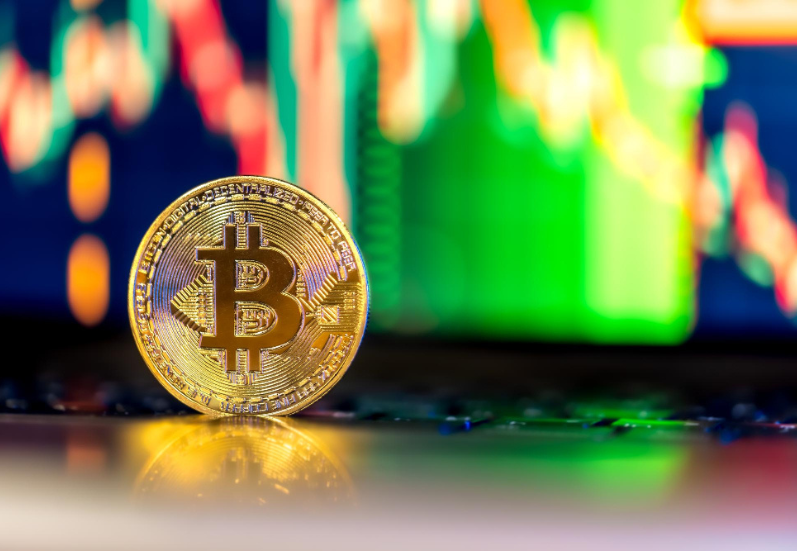
Today’s topic: the rise of cryptocurrency and its legal landscape!
Over the past decade, I’ve seen cryptocurrency go from a geeks’ experiment to something that’s redefining money. What was once an underground buzz is now an international financial movement.
As digital currencies gain traction, they’re rewriting the book on mainstream finance, creating new opportunities for everyone from amateur investors to governments.
However, what about the regulations related to cryptos and digital assets?
Hi. In today’s blog, that’s exactly what I will be talking about. So, if that’s what you want to know, keep reading till the end and thank me later…
What Is Cryptocurrency?
Put simply, cryptocurrency is a kind of digital money that’s protected by cryptography. But here’s what makes it really different—it’s not issued or controlled by any government, unlike the dollar or euro.
Instead, most of these digital currencies work on something called blockchain technology, which is just a fancy way of saying there’s a public record of transactions stored across loads of computers.
The first one that really caught people’s attention was Bitcoin. It came out in 2009, created by someone—or maybe a group—under the name Satoshi Nakamoto.
What they came up with was pretty wild at the time: a system where people could send money to each other directly, no banks needed.
I still remember hearing about it and thinking, “Wait, that’s actually possible?” Back then, it felt like science fiction. Now? It’s becoming part of everyday finance.
Key Features of Cryptocurrencies
Understanding the rise of cryptocurrency is not possible if you don’t know what the key features and elements of the same are.
So, here’s what you should know:
1. Decentralization
What drew many early adopters in (myself included) was the idea of a system not owned or controlled by anyone. Most cryptocurrencies rely on a network of users rather than a central authority. That’s a big shift—and it limits manipulation from the top.
2. Security and Transparency
Every transaction is locked into a public ledger. The second you get it in there, you can’t amend it. It’s like signing something in ink, not pencil—but the ink is electronic. You don’t have to disclose your identity, but it can be traced by those who must confirm the information.
3. Limited Supply
Scarcity adds value. Bitcoin, for example, has a hard cap of 21 million coins. Knowing that no more will ever be created gives it a kind of digital gold vibe—something that could gain value just by being finite.
4. Global Accessibility
One of the most powerful parts of crypto is that it’s open to anyone with an internet connection. I’ve spoken with people in remote parts of the world who’ve never had a bank account, but they own and use cryptocurrency. That’s pretty incredible.
| Popular Cryptocurrencies Today • Bitcoin (BTC): The original. Often called “digital gold.” • Ethereum (ETH): Powers smart contracts and decentralized apps. • Ripple (XRP): Focuses on fast, affordable global payments. • Litecoin (LTC): Offers quicker transactions than Bitcoin. • Solana (SOL), Cardano (ADA), and Polygon (MATIC): Rising stars aiming to solve scalability and DeFi integration. • TRON (TRX): Known for its speed and low transaction fees; trading pairs like TRX to USD are growing in popularity as it gains mainstream traction. Each one has its own mission. I’ve experimented with several of them, and they all bring something unique to the table. |
The Growth of Decentralized Finance (DeFi)
If you’ve ever felt boxed out by traditional banking, DeFi is something worth paying attention to. It strips away the intermediaries—banks, brokers, etc.—and replaces them with code: smart contracts that do the job automatically.
With DeFi, you can lend your crypto, borrow assets, or earn interest. I dipped my toes into yield farming a couple of years ago—it was risky but fascinating.
The whole thing runs on logic built into the blockchain, which makes it fast and relatively cheap.
NFTs and the Tokenization of Digital Assets
When NFTs first hit the mainstream, I’ll admit—I thought it was a gimmick. But then I saw how artists, musicians, and creators were finally getting paid directly by their audiences.
NFTs are unique digital tokens that represent ownership. That could be a digital painting, a song, or even a virtual land.
The cool part? They’re traceable and impossible to duplicate, which makes them ideal for proving authenticity in the digital age.
Institutional Adoption and Regulation
It’s no longer just hobbyists and tech nerds in the space. Big players—banks, hedge funds, major companies—are investing serious money into crypto. When Tesla announced its Bitcoin purchase, it was a wake-up call to many.
But naturally, governments are stepping in too. Some see it as a way to innovate; others are worried about risk and abuse. The challenge ahead is finding the balance—protecting consumers without choking off progress.
Risks and Challenges
As exciting as crypto is, it’s not all sunshine. Let’s be real:
- Volatility: Prices swing like crazy. I’ve seen portfolios double and halve in a week.
- Security Threats: Blockchains are strong, but wallets and exchanges have been hacked.
- Regulatory Uncertainty: One new law or ban can shake the whole market.
- Scams: If something sounds too good to be true—it probably is. And I’ve seen plenty of rug pulls.
So, be cautious. Learn before you leap.
What is Regulation for Cryptocurrency?
You must have seen how there have always been several legal frameworks that every industry has to follow in society. The world of crypto is not an exception, in case you didn’t know.
Crypto regulations are the set of legislative and executive measures that governments implement in order to influence the various sectors of the digital assets market.
Different countries’ crypto regulations can be at different ends of the spectrum. They may be very comprehensive to assist blockchain users or totally restrict the dealing and using of cryptocurrencies.
Regulations of digital assets may delineate procedures of generation, acquisition, merchandising, and transformation of digital money.
Also, a part of the process of supplying the new financial institutions with digital assets is the direction given by policymakers or officials in their agencies.
Without the existence of explicit and clear regulations, cryptocurrencies will not be able to flourish and be widely accepted.
How Are Cryptocurrency and Digital Assets Regulated In The United States?
Now that’s a question whose answer can be really vague. And that’s mainly because of the evolving landscape of the same.
For instance, it is important for you to understand that different federal agencies deal with digital assets in their own way. Which is why there is no single way of assessing the characteristics of certain cryptos.
In other words, different regulatory bodies treat digital assets and cryptocurrencies differently. Therefore, if there is a financial crime related to crypto, different bodies will deal with them differently.
Here’s how some regulatory bodies characterize these digital assets:
- Securities and Exchange Commission (SEC): They identify and classify the digital tokens as Securities. Hence, the regulatory standards are the same as those of other securities in the financial market.
- Commodity Futures Trading Commission (CFTC): For this regulatory body, cryptocurrencies are commodities. Therefore, the regulations are similar to those for gold and oil, which can support future contracts.
- Internal Revenue Service (IRS): Finally, this regulatory body classifies cryptos as property. And that makes any form of transaction involving these assets subject to taxation.
The Future of Cryptocurrency
I genuinely believe crypto will become a staple of the financial world, but it’s still a work in progress. A few things to watch:
1. Central Bank Digital Currencies (CBDCs)
Governments are experimenting with their own digital money to stay competitive and bring more people into the system.
2. Layer-2 Solutions
To fix speed and fee problems, solutions like Lightning Network and Optimism are being built on top of existing chains. It’s like adding express lanes to a busy highway.
3. Interoperability
For crypto to really scale, blockchains need to talk to each other. Projects working on cross-chain communication are paving the way.
4. Green Blockchain Initiatives
Energy use has been a concern, especially with Bitcoin. Now, we’re seeing a shift toward more eco-friendly models like proof-of-stake. That’s a step in the right direction.
Getting Started Safely
If you’re just getting started, here’s my honest advice:
- Stick to Trusted Exchanges: Names like Coinbase or Binance are a good starting point.
- Use Two-Factor Authentication (2FA): It’s a simple step, but it goes a long way in keeping your account secure.
- Read Up: Don’t just follow the hype. Take time to learn how things work.
- Start Small: Your first investment shouldn’t keep you up at night. Ease into it.
Cryptocurrency isn’t just some passing fad that’ll disappear—it’s a huge change in the way we deal with money and value.
There are issues, I know. But the potential to democratize finance, enable creatives, and bring bank accounts to the unbanked? That’s compelling.
And like with any new tech, those who understand it early tend to ride the biggest wave. So if you’re curious—learn, explore, and take small steps. The future is already being written on the blockchain.
Read Also:
- What is a MSB License: Know the Legal Authorization for Your Business!
- Saudi Arabian Investment: Legal Notes and Prospectives
- Deep Dive: Understanding Citizenship by Investment










0 Reply
No comments yet.